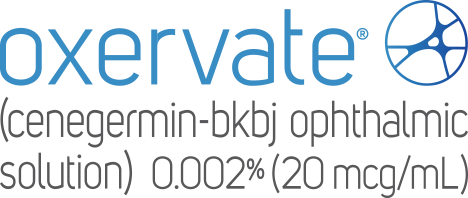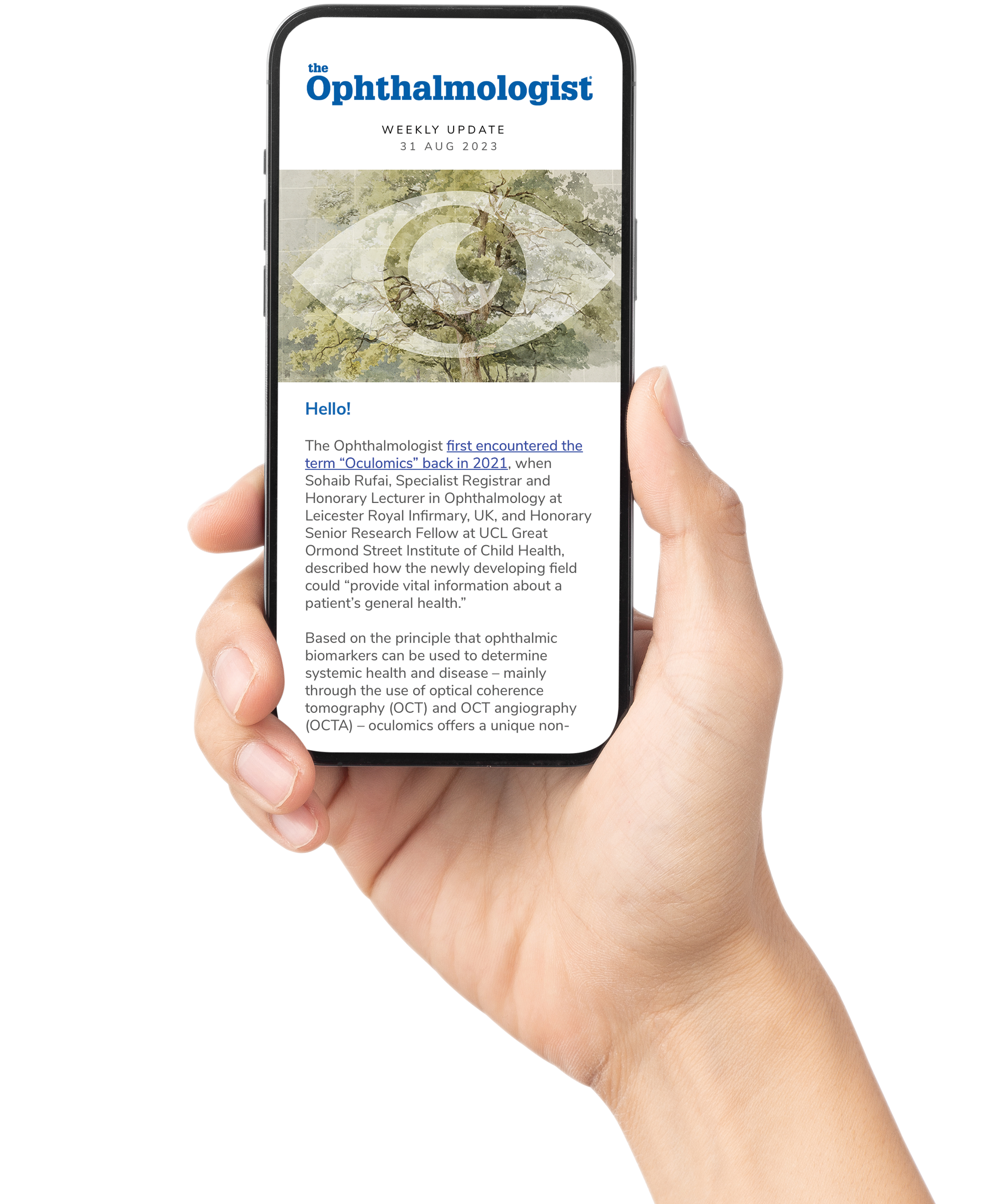Images show a neurotrophic corneal lesion from baseline through week 8 of an actual patient treated with OXERVATE® in a pivotal clinical trial. This is 1 patient’s outcome. Results are not indicative of all patients in the clinical trial.
BASELINE

Patient Overview
Images are of a clinical trial patient with Stage 2 neurotrophic keratitis (NK) at baseline and week 8. Evaluations conducted by independent central reading center of the clinical images of corneal fluorescein staining. Not all patients in the trials achieved complete corneal healing. Individual results may vary.1,2
Images show a neurotrophic corneal lesion from baseline through week 8 of an actual patient treated with OXERVATE® in a pivotal clinical trial. This is 1 patient’s outcome. Results are not indicative of all patients in the clinical trial.
WEEK 8

Patient Overview
Images are of a clinical trial patient with Stage 2 neurotrophic keratitis (NK) at baseline and week 8. Evaluations conducted by independent central reading center of the clinical images of corneal fluorescein staining. Not all patients in the trials achieved complete corneal healing. Individual results may vary.1,2
Patient 2a4
Patient information*
33-year-old female
Eye: Left, OS
Treatment-related adverse events†
None4
† As recorded by the investigator; relationship to study treatment recorded as possible, probable, or highly probable.
Study
NGF0214
Investigator-determined etiology
Herpes zoster virus and diabetes
Diagnosis
NK Stage 2
Evaluation of complete corneal healing
Complete corneal healing, defined as absence of staining of the corneal lesion and no persistent staining in the rest of the cornea, at 8 weeks of treatment.3,5
IMPORTANT NOTE: Each clinical trial participant's experience on treatment is unique. Individual results may vary.
*The information depicted is what was collected as part of the requirements of the clinical trials. This is not an all-inclusive medical history of the patient.1,2
Download the Case Study as a PDF

OXERVATE® is indicated for the treatment of neurotrophic keratitis.
WARNINGS AND PRECAUTIONS
Use with Contact Lens
Contact lenses should be removed before applying OXERVATE because the presence of a contact lens (either therapeutic or corrective) could theoretically limit the distribution of cenegermin-bkbj onto the area of the corneal lesion. Lenses may be reinserted 15 minutes after administration.
Please read the full Prescribing Information for OXERVATE, available from your Dompé representative.



